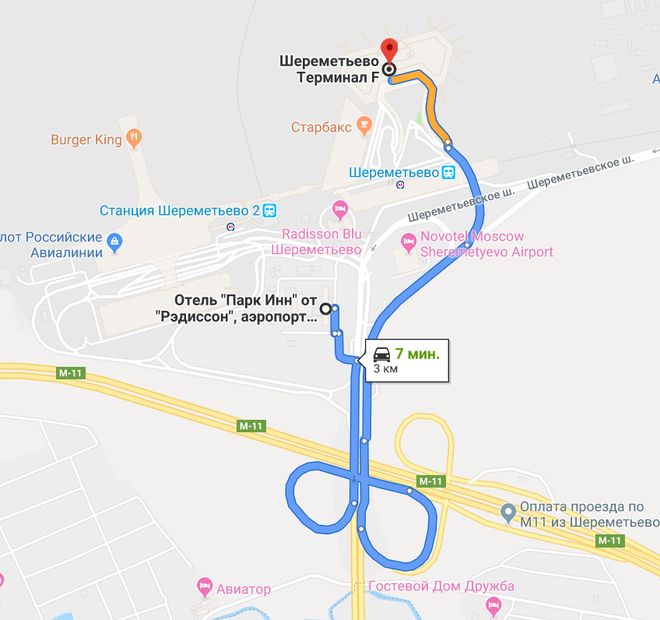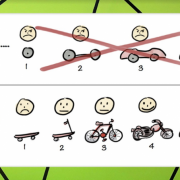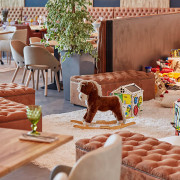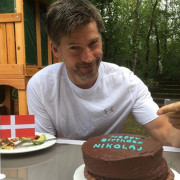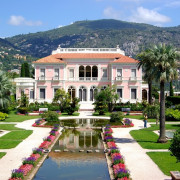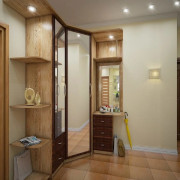Luigi cap
Содержание:
- Trivia[edit]
- Биография
- In Super Smash Bros.[edit]
- Литература
- References[edit]
- Names in other languages[edit]
- Тигры в губной помаде (1979) (Letti selvaggi)
- In Super Smash Bros. Melee[edit]
- Описание персонажа
- Profiles[edit]
- Species[edit]
- Trivia[edit]
- In Super Smash Bros. Ultimate[edit]
- Profiles and statistics[edit]
- Names in other languages[edit]
Trivia[edit]
- Much like in their home series, Luigi is largely perceived as being in Mario’s shadow within the Super Smash Bros. series. Aside from Super Smash Bros. 4, Luigi has been an unlockable character, whereas Mario has consistently been a starter character. In Super Smash Bros., the notice for unlocking Luigi described him as «The Eternal Understudy». In Super Smash Bros. Melee, one method to unlock Luigi is by clearing the first level (Mushroom Kingdom) in Adventure Mode with the timer set to the number 2 in the seconds area. (XX:X2:XX), which results in him being fought on Mushroom Kingdom II. In Super Smash Bros. Brawl, one of the ways to unlock Luigi is to play exactly 22 versus matches; additionally, Snake’s Codec Conversation sees Colonel Roy Campbell describe Luigi as the «King of Second Bananas». His in SSB4 is «The Eternal Understudy», which continues his «second hand» theme and is a direct reference to his .
- Luigi and Jigglypuff are the only characters to appear in SSB, Melee, Brawl, and Ultimate as unlockable characters.
- Luigi, Roy, and Richter are the only clones to debut in the same game as their base fighter.
- Luigi has always been portrayed as being slower at dashing compared to Mario in the Super Smash Bros. series. However, aside from certain games, such as the Mario & Luigi
Similarly, from Melee onward, Mario has been portrayed as being slightly weaker than Luigi. However, the Mario series has generally depicted Luigi as being slightly weaker than Mario.
series, Mario is generally the slower runner of the two.
- Luigi’s in the Super Smash Bros. series is similar to his mobility physics that debuted in Super Mario Bros. 2.
- Despite being able to wall jump in all but one Mario game, Luigi has been unable to do so in any Super Smash Bros.
However, he was seemingly able to wall jump in the early E3 build of Super Smash Bros. for Nintendo 3DS.
game.
- Prior to Brawl, Luigi had no unique sound effects whatsoever, despite having his own distinct voice beginning with Mario Kart 64, which was released before SSB. Instead, his voice clips and sound effects in SSB are simply higher pitched versions of Mario’s from Super Mario 64, while Luigi Cyclone’s voice clip and sound effect are directly copied from Mario Tornado. In Melee, Luigi received only one unique sound effect: the spring sound effect from Super Mario World for his planking victory pose.
- Due to his playable appearance in Luigi’s Mansion, a launch title for the Nintendo GameCube, Luigi is the only character in Melee to appear as a playable character on the Nintendo GameCube before Melee‘s release.
- Luigi, Yoshi, Snake, Corrin, and Joker are the only playable characters to feature material from games scheduled for release after an installment of Super Smash Bros. In Luigi’s case, the Poltergust G-00 from Luigi’s Mansion 3 is used for his grabs, pummel, throws, grab aerial and Final Smash in Super Smash Bros. Ultimate.
- Luigi is the only playable Mario character in Smash who was also playable in Super Mario 3D World (excluding Toad, who is simply portrayed here as one of Peach’s moves) to have an alternate costume based on his Fire form in all of the Smash games.
Биография
Сначала выбрал инженерную стезю. Потом увлёкся театром, но в итоге отдал предпочтение кинематографу. Учился в Экспериментальном киноцентре в Риме. Начинал как ассистент режиссёра (1938). Режиссёрский дебют — «Фра Дьяволо» (1942). Писал сценарии к большинству своих фильмов самостоятельно либо в соавторстве. Снимал комедии, диапазон которых охватывал как остросоциальную сатиру (неореализм), так и незатейливые ленты (кино белых телефонов), но никогда не опускался до ремесленничества. Считается признанным комедиографом Италии, любимым также и за пределами своего отечества.
In Super Smash Bros.[edit]
As a playable characteredit
Main article: Luigi (SSB)
Official artwork of Luigi from Super Smash Bros.
Luigi’s first appearance in a fighting game is in Super Smash Bros., where he appears as one of the four unlockable characters. His design is based on his appearance in Mario Party; however, his overalls in-game are colored indigo instead of blue, which references his sprite from Super Mario World. Luigi can be unlocked after completing Break the Targets with all of the starter characters.
Luigi’s abilities are almost identical to Mario’s, although there are a few differences between them. His neutral special move is also a Fireball, albeit colored green and immune to gravity. Luigi’s up special move is also the Super Jump Punch, but his is very polarized compared to Mario’s: due to consisting of a sweetspot and a sourspot, Luigi’s version can deal up to 25% when landing the former, but only 1% when landing the latter. Lastly, his down special move is Luigi Cyclone: it is similar to Mario Tornado, but instead consists of only two distinct hits and that each launch the opponent away from Luigi. Unlike the rest of the cast, Luigi’s taunt is the only one capable of dealing damage.
Largely because of his awkward physics, Luigi is considered the worst character in the game and is currently ranked 12th out of 12 on the tier list. This places him at the bottom of the C tier, and posits him as a bottom tier character.
Luigi’s in-game character description reads:
- Luigi
- Though often hidden in his older brother Mario’s shadow, Luigi, is in reality, very popular. Taller than Mario, Luigi also jumps higher. Although he didn’t appear in Super Mario 64, in Mario Kart 64 he performed to the best of his ability. For one who always seems to be in the background, he has many fans who eagerly await his appearance.
- Works:
- (NES)
- Super Mario Bros. 2 (NES)
- Mario Kart 64 (N64)
Литература
- Рейзен,О. К., Дзампа Луиджи // Кино: Энциклопедический словарь / Гл. ред. С. И. Юткевич Москва, Советская энциклопедия, 1987. — с. 123
- Алова, Л., Дзампа Луиджи // Режиссерская энциклопедия. Кино Европы / Сост. М. М. Черненко; Отв. ред. Г. Н. Компаниченко, НИИ киноискусства.- М.: Материк, 2002. — с. 61—62 — ISBN 5-85646-077-4
- Кино Италии: Неореализм. — М., Искусство, 1989. — ISBN 5-210-00452-X
- Meccoli D., Luigi Zampa. — Cinque, Roma, 1956.
- Lizzani Carlo, Il cinema italiano 1895—1979. — Editori riuniti, Roma, 1979.
- Faldini F., Fofi G. Avventurosa storia del cinema italiano. — Feltrinelli, Milano, 1979.
References[edit]
- File name of an image () from the official Luigi’s Mansion website
|
[] Luigi’s Mansion / Luigi’s Mansion (Nintendo 3DS) |
||
|---|---|---|
| Characters | Luigi • Gooigi* • Mario • Professor Elvin Gadd • Toad • King Boo | |
| Tools/Equipment | Boo Radar • Flashlight • Game Boy Horror • Poltergust 3000 • Strobulb* | |
| Items and objects | Bill • Blue Diamond • Blue Stone • Bomb • Boo Ball • Cheese • Coin • Gold Bar • Gold Bone* • Gold Diamond • Green Stone • King Boo’s Crown • Mario’s Glove • Mario’s Hat • Mario’s Letter • Mario’s Shoe • Mario’s Star • Pearl • Red Diamond • Red Stone | |
| Normal Ghosts | 35 Boos • Bat • Black Bogmire • Blue Blaze • Blue Mouse • Blue Twirler • Bowling Ghost • Ceiling Surprise • Elemental Ghosts • Flash • Flying Fish • Garbage Can Ghost • Ghost Guy • Gold Ghost • Gold Mouse • Grabbing Ghost • Mr. Bones • Purple Bomber • Purple Mouse • Purple Puncher • Shining Ghost • Spark • Speedy Spirit • Temper Terror • Waiter | |
| Portrait Ghosts | Biff Atlas • Bogmire • Boolossus • Chauncey • Clockwork Soldiers • Floating Whirlindas • Henry and Orville • Jarvis • King Boo • Lydia • Madame Clairvoya • Melody Pianissima • Miss Petunia • Mr. Luggs • Nana • Neville • Shivers • Sir Weston • Slim Bankshot • Spooky • Sue Pea • Uncle Grimmly • Vincent Van Gore | |
| Rooms | Professor Elvin Gadd’s Lab | Gallery • Portrificationizer Chamber • The Lab • Training Room |
| Area One | Anteroom • Balcony • Foyer • Master Bedroom • Nursery • Parlor • Study • Wardrobe Room | |
| Area Two | Ball Room • Bathroom • Boneyard • Butler’s Room • Conservatory • Dining Room • Graveyard • Hidden Room • Kitchen • Laundry Room • Mirror Room • Storage Room • Washroom | |
| Area Three | Astral Hall • Balcony • Bathroom • Billiards Room • Bottom of the Well • Courtyard • Fortune-Teller’s Room • Nana’s Room • Observatory • Projection Room • Rec Room • Safari Room • Tea Room • The Twins’ Room • Washroom | |
| Area Four | Armory • Artist’s Studio • Breaker Room • Cellar • Ceramics Studio • Clockwork Room • Cold Storage • Guest Room • Pipe Room • Roof • Sealed Room • Secret Altar • Sitting Room • Telephone Room | |
| Miscellaneous | Ghost Portrificationizer • Luigi’s Mansion • Luigi’s NEW Mansion • Mario’s Painting • Polterpup* | |
| Further info | Gallery • PolterCue • Pre-release and unused content • Professor E. Gadd’s Research Journal* • Quotes • Staff (GCN · 3DS) | |
| * Exclusive to Nintendo 3DS version |
Names in other languages[edit]
| Language | Name | Meaning |
|---|---|---|
| Japanese | ルイージマンションRuīji Manshon | Luigi Mansion |
| Spanish | Mansión de Luigi | Luigi’s Mansion |
| French | Manoir de Luigi | Luigi’s Mansion |
| Dutch | Luigi’s Landgoed | Luigi’s Estate |
| German | Luigis VillaLuigi’s Mansion | Luigi’s Mansion- |
| Italian | Palazzo di Luigi | Luigi’s Palace |
| Portuguese | Mansão do Luigi | Luigi’s Mansion |
| Russian | Дворец ЛуиджиDvorets LuidzhiОсобняк ЛуиджиOsobnyak Luidzhi | Luigi’s PalaceLuigi’s Mansion |
| Korean | 루이지 맨션Ruiji Maensyeon | Luigi Mansion |
| Chinese (Simplified) | 路易吉洋馆 (Luigi’s Mansion: Dark Moon and Mario Kart 8 Deluxe)Lùyìjí Yángguǎn路易吉的洋馆 (Mario Kart 7)Lùyìjí de Yángguǎn | Luigi MansionLuigi’s Mansion |
| Chinese (Traditional) | 路易吉洋樓Lùyìjí Yánglóu | Luigi Mansion |
Тигры в губной помаде (1979) (Letti selvaggi)
Для взрослых, Зарубежный фильм, Комедия
Режиссер: Луиджи Дзампа
В ролях: Урсула Андресс, Лаура Антонелли, Сильвия Кристель
Женщина-вамп Урсула Андресс, очаровательная Лаура Антонелли, незабвенная Эммануэль и интеллектуалка Моника Витти — такие разные и такие суперсексуальные звезды европейского кино! — в комедийном альманахе, состоящем из нескольких Остроумных Новелл-анекдотов крайне эротического содержания. Причем каждая из актрис появилась в двух историях, продемонстрировав не только свою безупречную красоту и восхитительные формы, но и прекрасное чувство юмора. Этот фильм — редкая удача для мужской части кинозрителей, ведь далеко не всегда выпадает возможность увидеть столько талантливых, привлекательных и преимущественно раздетых девушек одновременно. Но и для кинозрителей, поводов для радости не меньше — сильный пол представлен здесь в виде идиотов, недотеп и зануд. Исключение составляют два персонажа в исполнении Микеле Плачидо. Вообще-то он сыграл негодяев, но абсолютно неотразимых!
In Super Smash Bros. Melee[edit]
As a playable characteredit
Main article: Luigi (SSBM)
Luigi, as he appears in Super Smash Bros. Melee.
Luigi returns in Super Smash Bros. Melee as an unlockable character. Unlike in SSB, his design has been updated to appear almost exactly like his Nintendo 64 render artwork, instead of a combination of his in-game appearance in Mario Party and indigo overalls from Super Mario World. Luigi can be unlocked in Adventure Mode by finishing the first stage with the number 2 in the timer; in addition to causing him to take Mario’s place in the subsequent battle, it may also be a reference to Luigi originally being the player 2 analog to his brother. Luigi can also be unlocked by playing 800 Versus Mode matches.
Due to his neutral attack’s third hit, up tilt, down tilt, forward smash, and forward aerial being completely overhauled both aesthetically and mechanically, Luigi has been de-cloned into a semi-clone of his older brother. Like his fellow veterans, Luigi now has a side special move; in his case, it is Green Missile. Green Missile propels Luigi forward and can be charged. In addition to being usable for recovery like Super Jump Punch, Green Missile can potentially misfire, which significantly increases its damage output and travel distance. Lastly, Luigi’s taunt is now capable of meteor smashing edge-hanging opponents, although it is extremely situational to use in such a manner.
Due to Luigi’s moveset and mobility being improved by direct changes and especially because of Melee‘s game physics (most notably wavedashing and chain grabbing), he is currently ranked 13th out of 26 on the tier list. This places him in the D tier, and posits him as a mid tier character.
Trophiesedit
As a playable character, Luigi is featured on three trophies: his normal trophy, acquired by clearing Classic Mode with him on any difficulty, and «Smash Red» and «Smash Blue» trophies won by clearing Adventure and All-Star Modes, respectively. A fourth trophy featuring Luigi is also available, which is styled after his appearance in Luigi’s Mansion.
His normal and «Vacuum Luigi» trophies read as follows:
LuigiAlthough Mario’s younger brother has always played second fiddle, Luigi finally garnered the spotlight with his very own game, Luigi’s Mansion. Things are looking up for the eternal understudy; he’s even picked up his own rival in Waluigi. The day he’s referred to as the «lean, mean, green machine» may not be too far off.
Mario Bros, Arcade 1983
Vacuum LuigiIn a strange twist of fate, Luigi wins a huge mansion in a contest he didn’t even enter, and the place turns out to be haunted! After meeting a weird professor named Elvin Gadd, Luigi enters the place armed with a flashlight and a ghost-sucking vacuum cleaner. Mario’s trapped somewhere in there! Can Luigi save him?
Luigi’s Mansion, 11/01 (GameCube)
Описание персонажа
Внешний вид
Имя «Валуиджи» — комбинация имени «Луиджи» и японского «warui» — «плохой» (дословно «Валуиджи» переводится как «плохой Луиджи»). Как и Варио для Марио, он — полная противоположность для Луиджи: он очень высокий и тощий, у него похожий на стручок перца ярко-розовый нос, оттопыренные остроконечные уши, выступающий треугольный подбородок и задранные кверху почти под прямым углом усы, походящие на буквы L. Одет чаще всего в тёмно-фиолетовую рубашку, чёрный комбинезон, оранжевые ботинки с острыми задранными кверху носами и кепку с перевёрнутой буквой L. Чаще всего изображается презрительно ухмыляющимся.
Характер
Валуиджи комический и в то же время несчастный персонаж. Валуиджи завидует братьям Марио, особенно Луиджи, вследствие чего соперничает с ним во многих играх. Также Валуиджи завидует успеху Варио, пусть и не так сильно, чтобы соперничать с ним. Марио пытается поддерживать с ним, как и со всеми, хорошие отношения, к примеру, в Mario Тennis пытался остановить конфликт своего брата с Валуиджи. В своем выступлении в качестве основного антагониста в Dance Dance Revolution: Mario Mix, Валуиджи утверждает, что желает заполучить музыкальные ключи чтобы стать лучшим танцором в мире и использовать свою влиятельность для распространения хаоса и контроля над большинством. В Mario Powеr Tennis Варио и Валуиджи проиграли турнир братьям Марио, и, из-за обиды, объединились с Боузером, однако лишь всё испортили, из-за чего последний разорвал союз. Оригинальная биография Валуиджи в Mario Tennis также указала, что он стремился стать таким же популярным и любимым, как Братья Марио. Его празднования победы часто подчеркивают его слишком высокую самооценку и тщеславие.
Валуиджи был показан довольно скрытным и более циничным и скептическим по сравнению с другими персонажами, поскольку даже в его самых старых описаниях упоминается его эгоизм и его статус постороннего в Грибном Королевстве. Тем не менее, недавние игры подкрепили трудолюбивые и менее злые черты личности Валуиджи, как показано в Mario & Sonic at the Rio 2016 Olympic Games, он предупреждает игрока, что люди не будут его подбадривать вечно только потому, что он выигрывает медали, а в Mario Gold: World Tour он говорит персонажу игрока, чтобы он не позволял своей победе попасть в его головы, и что он должен быть честным с собой и счастливым, потому что он заслужили это. Кроме того, он отмечает, что его любимое занятие между раундами — просто отдыхать и веселиться.
Однако, несмотря на его самоуверенность, Валуиджи также характеризуется большим количеством жалости к себе, которую он иногда проявляет. По словам его актера озвучивания Чарльза Мартине, Валуиджи считает, что всё хорошее всегда происходит со всеми, кроме него, что вызывает у него большие разочарования. Его нелёгкая судьба порождает отрицательный характер.
Умения
Благодаря своим длинным рукам и ногам Валуиджи хорошо стреляет из лука и плавает. Кроме того, как и у других персонажей, у него есть целый набор различных атак: от простых вроде прыжков, толчков и пинков до чудных и даже слегка сумасшедших, как то быстрое верчение вокруг своей оси, создающее небольшой торнадо, сотворение стен из колючих растений или же атака кнутом с шипами.
Profiles[edit]
Luigi’s Mansion (Nintendo 3DS)edit
Digital manual description: «Gooigi cannot open doors. He has half the health of Luigi, but if he is defeated in battle, he can revive after a short time.»
Luigi’s Mansion 3edit
- European website bio: «This gooey, green doppelganger can use his…err…gooiness to squeeze through tight spaces, walk across dangerous spike-laden floors, help lift heavy objects and overcome all sorts of contraptions.»
- In-game bio: «A doppelganger of Luigi that is stored inside the Poltergust. Made from a substance created from ghost energy, called «goo,» Gooigi looks almost exactly like Luigi!»
Play Nintendoedit
Luigi’s Mansion 3 Trivia Quiz: «Professor E. Gadd discovered the green element known as Goo, then used Luigi’s biological data to create an exceedingly green copy of Luigi.»
Species[edit]
| Species | |
|---|---|
| Image | Description |
| Toads | |
| A typically timid species, Toads act primarily as save points in the first game. In the second game, they are E. Gadd’s assistants, and hold footage from security cameras, but must be escorted to a Pixelator before it can be seen. In the third game, three Toads who came with Mario, Luigi, and Princess Peach are turned into paintings and have to be saved throughout the game and brought back to E. Gadd’s Lab. | |
| Boos | |
| Spherical ghosts, most Boos prefer to hide and run instead of fight. In the first game, they must be sucked up to advance at certain points, but the light in the room they hide in must be turned on to do so. Once Luigi finds them, they try to escape to another room. In the second game, they use Spirit Balls to cast illusions, turning objects invisible, and exposing the correct object will draw out the Boo. In the first game, there are , in the second, , and in the third, , most of which have their own pun-based name. | |
| Ghosts | |
| Ghosts are the various spectral enemies throughout the games. In the first game, most of them are creations of the ghost artist Vincent Van Gore brought to «life,» while in the second, the ghosts are normal inhabitants of Evershade Valley that turned hostile when the Dark Moon is shattered. The former also contains the more powerful Portrait Ghosts, most of which have their own unique personalities and abilities. The third game introduces Boss Ghosts, which are similar to the Portrait Ghosts from the first game but act as more traditional bosses. |
Trivia[edit]
- Luigi’s Mansion is mentioned by one of the crows in Twilight Town in Paper Mario: The Thousand-Year Door.
- The Foyer of the mansion appears in the Mansion Patrol minigame of Super Paper Mario. The Foyer is depicted as black and lined with empty portraits, making it look rather different than its other depictions, though the Nintendo Power player’s guide for Super Paper Mario actually referred to it directly as «a Luigi’s Mansion foyer».
- On the Game Boy Horror, the rooms are color-coded by area. Yellow is area 1, blue is area 2, green is area 3, and pink is area 4.
- Mario Kart: Double Dash!! is the only game after Luigi’s Mansion to depict the mansion as it looks in its best ending. It can be seen in Luigi Circuit, in the distance, around the farther corner. The track’s remake in Mario Kart DS also keeps the refurbished mansion, despite the game having a track in the haunted version of the mansion.
- Although the mansion does not appear in the Super Mario Mash-Up Pack in Minecraft, the trailer of the Nintendo Switch Edition features Luigi with the Poltergust walking into a ghost house, referencing the mansion and game.
In Super Smash Bros. Ultimate[edit]
As a playable characteredit
Main article: Luigi (SSBU)
Luigi, as he appears in Super Smash Bros. Ultimate.
Luigi returns as an unlockable character in Super Smash Bros. Ultimate. He was formally announced alongside the rest of the cast via Ultimate‘s E3 2018 trailer on June 12th, 2018. Like Mario, Luigi’s design is now based on his appearance in Super Mario Odyssey, albeit without the accessories he wears in that game. In addition, Luigi now uses his Poltergust G-00 from Luigi’s Mansion 3 for his grabs, pummel and throws; in addition to granting him a grab aerial, it fittingly replaces the Poltergust 5000 for his Final Smash.
Although Luigi received a new up tilt that is aesthetically and mechanically similar to Mario’s up tilt, the combination of his Poltergust G-00, new dashing animation, and new forward tilt have collectively de-cloned him into a pseudo-clone of his older twin brother after previously being a semi-clone of him from Melee to SSB4.
As a costumeedit
Luigi’s Cap in Super Smash Bros. Ultimate.
Once again, Luigi’s hat is available as headwear for Mii Fighters. It can be found in a Treasure Chest in World of Light.
Profiles and statistics[edit]
Trophy informationedit
| Type | Image | Description |
|---|---|---|
| Luigi’s Mansion | A big, creepy mansion in the heart of a gloomy forest. It was given to Luigi, who found its many rooms (including a dining room, kitchen, rec room, projection room, music room, and tea room) were infested with ghosts. Luigi was supposed to meet Mario here, but his bro went missing. Not known for his bravery, Luigi gathered his courage and set out to explore his new home. |
Songs in My Musicedit
| Name | Source | Credits |
|---|---|---|
| Luigi’s Mansion Theme | Luigi’s Mansion | Arrangement Supervisor: Shogo Sakai |
| Airship Theme (Super Mario Bros. 3) | Super Mario Bros. 3 | Arrangement: Motoi Sakuraba |
| Castle / Boss Fortress* (Super Mario World / SMB 3) | Super Mario World / Super Mario Bros. 3 | Arrangement Supervisor: Yusuke Takahama |
| Tetris: Type A | Tetris | Arrangement Supervisor: Yoko Shimomura |
| Tetris: Type B* | Tetris | Arrangement: Masafumi Takada |
* unlocked from CDs
Names in other languages[edit]
Dreamy Luigiedit
| Language | Name | Meaning |
|---|---|---|
| Japanese | ユメルイージYume Ruīji | Dream Luigi |
| Spanish (NOA) | Luigi Onírico | Dream Luigi |
| Spanish (NOE) | Luigi Soñador | Dreamer Luigi |
| French | Oniluigi | From onirique (oneiric) and Luigi |
| Dutch | Droom-Luigi | Dream Luigi |
| German | Traum-Luigi | Dream Luigi |
| Italian | Oniriluigi | From onirico (oneiric) and Luigi |
| Portuguese | Luigi Onírico | Oneiric Luigi |
| Russian | Луиджи-баюнLuidzhi-bayun | From Bayushki bayu (an expression to lull a baby to sleep in Russian) and Luigi |
| Korean | 꿈속루이지Kkumsokruiji | Dream Luigi |
Luiginary Worksedit
| Language | Name | Meaning |
|---|---|---|
| Japanese | ミラクルイージMirakuruīji | Contraction of Miracle and Luigi |
| Spanish | Elementos Luiginarios | Luiginary ElementsFrom Luigi and imaginario (imaginary) |
| French | Mécanisme luimagik | Luimagik Mechanism From Luigi and magic |
| Dutch | Luigillusies | LuigillusionsFrom Luigi and illusies (illusions) |
| German | Luigisionsobjekte | Luigillusion ObjectsFrom Luigi and illusion |
| Italian | Meccanismi Magiluigi | Luiginary MechanismsFrom Luigi and immaginario (imaginary) |
| Portuguese | Mecanismos Luiginários | Luiginary MechanismsFrom Luigi and imaginário (imaginary) |
| Russian | Фантазии ЛуиджиннаFantazii Luidzhinna | Luiginary Fantasies |
| Korean | 미라클루이지Mirakeulruiji | Miracle Luigi |
Luiginary Attacksedit
| Language | Name | Meaning |
|---|---|---|
| Japanese | ミラクルアタックMirakuru Atakku | Miracle Attack |
| Spanish | Ataques Luiginarios | Luiginary Attacks From Luigi and imaginario (imaginary) |
| French (NOE) | Attaques luimagik | Luimagik AttacksFrom Luigi and Magic |
| Dutch | Luigio-aanvallen | Luigio AttacksThe name Luigio is short for Luigiopieën (Luigiopies or Luigi Copies), the Dutch name for the Luiginoids |
| German | Traum-Attacken | Dream Attacks |
| Italian | Attacchi Magiluigi | Luiginary AttacksFrom Luigi and immaginario (imaginary) |
| Portuguese | Ataques Luiginários | Luiginary AttacksFrom Luigi and imaginário (imaginary) |
| Russian | Атаки ЛуиджиннаAtaki Luidzhinna | Luiginary Attacks |
| Korean | 미라클어택Mirakeuleotaek | Miracle Attack |

